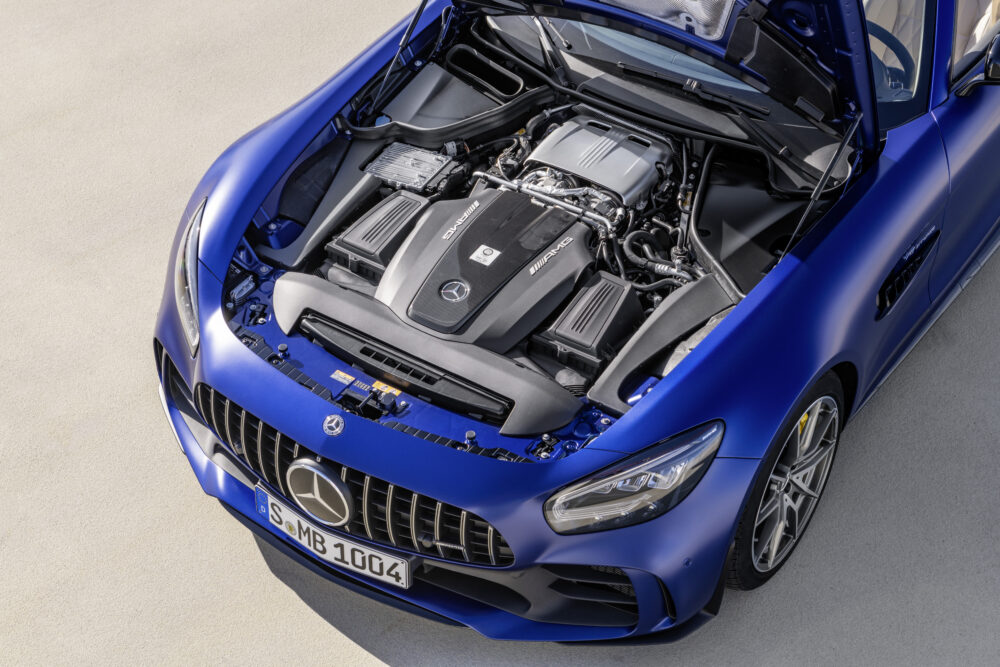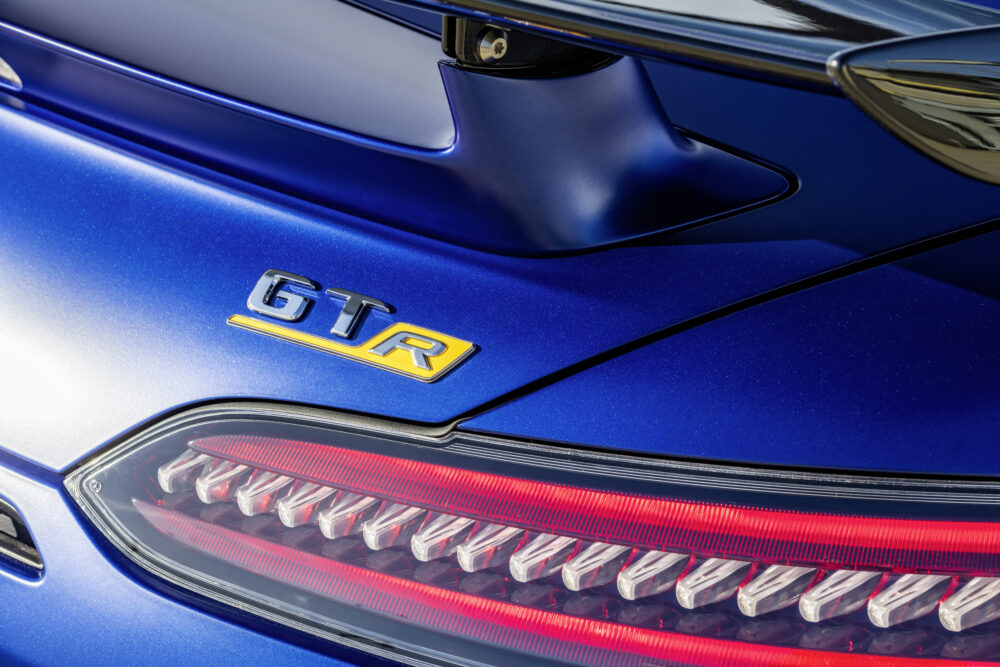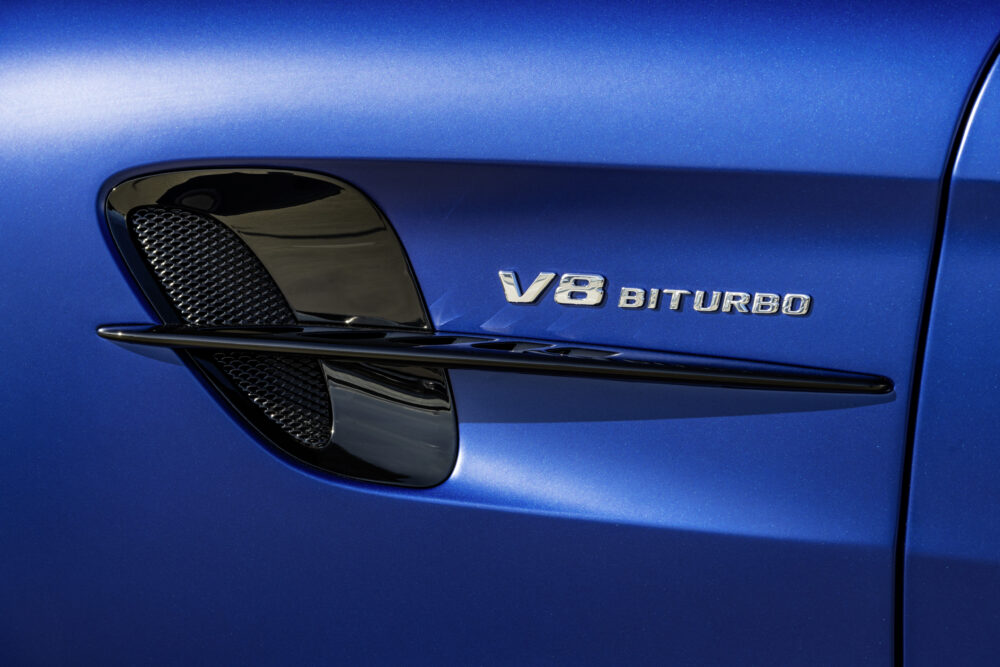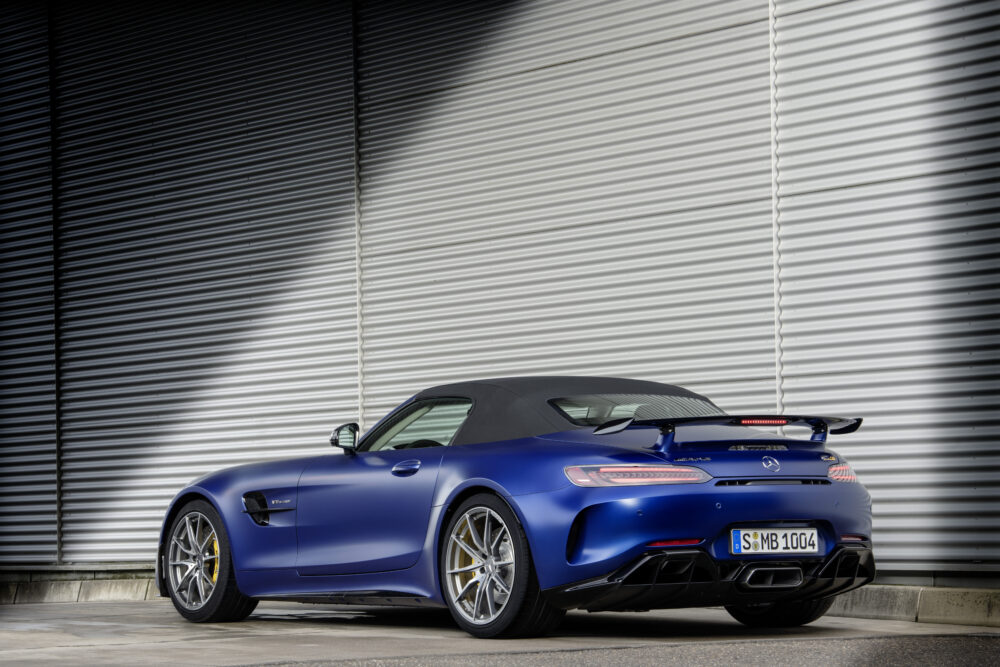2019 AMG GT R Roadster Will Be Limited to 750 Units Worldwide
Intelligent Lightweight Construction
A key factor in a sports car’s performance is a low gross vehicle weight. Mercedes-AMG uses an intelligent material mix in order to achieve this aim in the structure of the AMG GT R Roadster. Various aluminum alloys are utilized for the chassis and body, and magnesium for the front deck. This extremely light element at the front reduces the inertia ahead of the front axle, thus improving the vehicle’s agility. The load-bearing structure of the trunk lid is SMC (Sheet Moulding Compound) bonded with carbon fibers. These high-tech compounds excel with their lightweight design, high strength and outstanding surface quality.
The weight-optimized spaceframe is made of die-cast and extruded aluminum sections. The high bending and torsional strength of the entire design enables extreme linear and transverse forces from the drivetrain and suspension to be absorbed and transferred. Unwanted flexibility is reduced, with the vehicle responding precisely and directly. The result is that the driver experiences a sports car with maximum dynamics with outstanding precision. The body-in- white now also has an integral aluminum cross member as rollover protection for the occupants.
Materials from Motor Racing
A host of further measures contributes to weight reduction as part of the AMG lightweight-performance strategy. Light and strong carbon fiber is the material of choice for, among other things, the front fenders and the torque tube between the engine and transmission.
Now weighing in at approximately 30 pounds, the carbon-fiber torque tube is about 40 percent lighter than its already weight-optimized aluminum counterpart in the AMG GT. As a structural component of the transaxle drivetrain, it creates a connection between the engine and the transmission with extreme flexural and torsional stiffness. It permits a direct connection of the drivetrain that is favorable to driving dynamics and plays a role in the vehicle’s balanced weight distribution.
Further weight advantages come from the standard forged wheels, the titanium rear silencer and fewer soundproofing materials.
Carbon Tunnel Bracing
The tunnel brace in carbon further stiffens the body considerably for withstanding the high torsional loads that occur during powerful acceleration. To this end, it braces the two vehicle sides against each other even more effectively in the tunnel area for the torque tube. This significantly increases the torsional rigidity by some 7.5 percent. After the first few feet, the driver gets an extremely precise driving impression, which is maintained even in the event of extreme vehicle loads when driving at the dynamic limits. The highly composed body allows for even better control of the AMG GT R Roadster under difficult racetrack conditions such as fast, bumpy corners and means that less steering effort is required.
Over and above this, two diagonal braces in the engine bay stiffen the front end. In the AMG GT R, they are also made of carbon fiber and represent weight savings of about 50 percent over steel components.
4.0-liter V8 Biturbo Engine for AMG GT R Roadster
The AMG 4.0-liter V8 Biturbo delivers 577 hp in the AMG GT R, with the maximum torque of 516 lb-ft available from 2100 to 5500 rpm. Different exhaust gas turbochargers with modified compressor processing and a smaller boost pressure control valve cell, as well as sharper engine management application are used compared with those found in the other AMG GT models. The boost pressure has increased by 2 psi. In addition, the exhaust ports have been optimized and the compression ratio modified. The entire combustion process has been retuned.
For optimum power output even when outside temperatures are high, Mercedes-AMG uses indirect air-to-water intercooling. With optimum flow of air and water, the intercoolers have a separate, two-stage low-temperature
water circuit. The first cooler stage involves two parallel coolers in the left and right wheel arch.
The downstream charge air coolers, through which water flows, ensure that the intake air compressed by the turbochargers is cooled effectively before it enters the combustion chambers. It therefore remains at a consistently low level even under full load. Extremely short charge-air ducting makes for optimum responsiveness.

The combination of twin turbochargers and direct fuel injection with spray- guided combustion increases thermodynamic efficiency and output.
Particularly fast and precise piezo injectors spray the fuel at high pressure into the eight combustion chambers. Multiple injection occurs on-demand, ensuring a homogeneous fuel/air mixture. The delivery of fuel is electronically controlled and fully variable for a fuel pressure between 100 and 200 bar.
The aluminum crankcase is produced using sand casting technology and features a closed-deck design. This ensures extreme strength while keeping the weight as low as possible, and allows high injection pressures of up to 140 bar. The NANOSLIDE coating on the cylinder liners is far harder than conventional grey cast-iron liners and therefore less susceptible to wear. In addition, its reduced friction in combination with the aluminum-forged pistons helps to increase efficiency.
Four overhead camshafts control a total 32 valves. Camshaft adjustment on the inlet and outlet side enables an excellent response and optimizes the gas cycle for each operating point. The dry sump lubrication also ensures the oil supply even with high lateral forces and allows the engine to be installed lower, thus moving the center of gravity closer to the road and forming the basis for high lateral acceleration.
Goosebump-inducing Exhaust
The specially developed exhaust system not only delivers genuine racing car sound, it also saves around 13 pounds of weight thanks to the use of titanium for the rear silencer, and thin-walled stainless steel for the front section of the exhaust system.
With its special, hexagonal form, the large tailpipe tip centered in the rear bumper emphasizes the car’s motor-racing character. Two more tailpipes are located on the left and right in the diffuser. Their tips are sheathed in carbon fiber, like in motorsport, to protect the diffuser against high exhaust temperatures. The exhaust system features two infinitely variable exhaust flaps as standard, which have a direct influence on the sound of the AMG GT R Roadster.
The exhaust flaps open and close depending on the selected AMG DRIVE SELECT mode, although they can also be controlled individually using a separate button in the AMG DRIVE UNIT. In the “Comfort” and “Sport” modes, the low-frequency sound typical of a V-8 emphasizes comfort. In “Sport Plus” and “RACE” modes, meanwhile, the sound composition is far more dynamic.





